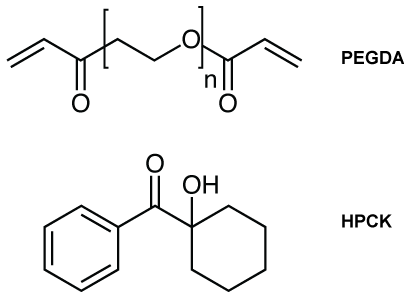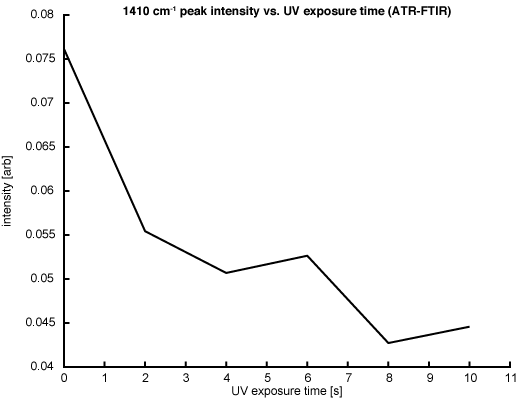Reports: UNI655151-UNI6: Investigating the Development of Intermolecular Networks in Coatings with Single-sided NMR
Tyler Meldrum, College of William and Mary
Objectives and Summary
The curing of coatings is a phenomenon with an interesting and complex mechanism, from molecular cross-linking to the formation of a molecular network over several hours to days. Some studies have looked at spatial changes in the thickness of an applied coating during the curing process, while others have examined molecular changes via optical spectroscopies. However, none has adequately addressed the formation of the intermolecular network during the curing process. The research described here concerns the curing of coatings using single-sided NMR. Such NMR experiments, like many done previously, can probe the total thickness of an applied coating, reporting on the rate of solvent evaporation. However, single-sided NMR can also measure relaxation times and dipolar couplings—complementary measurements that are indicative of the spatial arrangement, and thus network, of molecules within the film. These measurements can be made in a spatially sensitive manner, tracking changes throughout the thickness of a coating, with high spatial resolution.
To date, we have made the following steps toward the objectives of this grant:
1. Selected and tested a UV-cured coating.
2. Demonstrated a reduction in T2 relaxation times as the coating is cured.
3. Corroborated the results in (2) with ATR-FTIR measurements.
These steps have led to one undergraduate honors thesis (2016) and have produced results that are currently in preparation for publication with four undergraduates as coauthors.
Details of the main steps accomplished so far are described below.
Coating selection and preparation
We have selected a UV-curable coating that consists of poly(ethylene glycol) diacrylate (PEGDA) with 1-hydroxy cyclohexyl phenyl ketone (HCPK) as the photoinitatior. These molecules are shown in Figure 1. This coating was selected as is it readily available and has been used extensively in previous research (including in studies that measure FTIR spectra), can be mixed with 2-ethylhexyl acrylate (EHA) to change the composition and curing properties of the coating, is readily cured with a 365 nm UV source, and it has a glass transition temperature around 50 °C, well above the room temperature at which we operate.
Dispersing the coating evenly and thinly across a glass substrate has proved challenging; however, we have constructed a spin coater that distributes the coating to a thickness of less than 25 μm as measured by a comb-style thickness meter; thin layers are necessary to maintain optical transparency for the UV light. (Only 10% of the light penetrates to a depth of 8 μm.) This results in a cured spot of coating that is roughly circular with a diameter of ~1 cm.
T2 relaxation times
Using a CPMG pulse sequence, we first localize the coating layer on a glass slide. This procedure can be time consuming as the signal must be measured and the position of the magnet adjusted in an iterative manner over tens of repetitions. Once the signal has been located, a CPMG measurement with a greater number of scans (to increase SNR) is acquired. The data is fit to an exponential decay function which characterizes the relaxation time T2.
Successive coating samples are cured with different amounts of UV light (from 0–10 seconds, typically), and a T2 value for each sample is measured separately. These T2 values are plotted against the total curing time to show a repeatable trend: the T2 values decrease with increasing curing time. (See Figure 2.) This is consistent with the hypothesis that increased cross-linking (in other words, longer UV exposure) increases the rate of transverse relaxation as manifest by smaller T2 values.
ATR-FTIR results
To corroborate the NMR results, ATR-FTIR measurements were taken that show a decrease in the intensity of the peak at 1410 cm–1 with increased UV exposure, as shown in Figure 3. This peak indicates an acrylic double bond, and its disappearance is consistent with curing-based polymerization. This finding is also consistent with other published reports.
Impacts
This grant has allowed the PI to establish a research program involving undergraduate students and to demonstrate capabilities of single-sided NMR that have not been directly explored. The PI is building from this research to develop NMR methodologies for single-sided devices, as well as to measure other thin samples (e.g., paint films) with better precision and accuracy. These projects are under consideration for external funding elsewhere.














